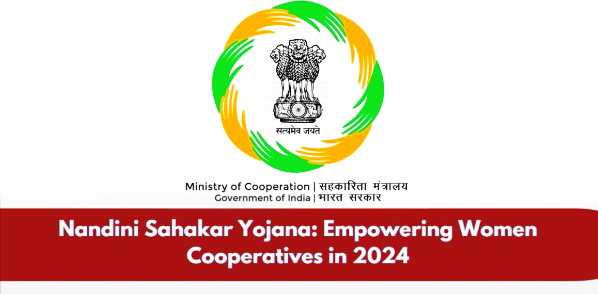Nandini Sahakar Yojana (GS Paper 2, Government Policies)

Introduction
- On August 10, 2024, the Union Minister of Cooperation provided a detailed overview of the Nandini Sahakar Scheme in the Rajya Sabha.
- This initiative represents a significant effort by the National Cooperative Development Corporation (NCDC) to support and uplift women's cooperatives across India.
- This article delves into the key features of the Nandini Sahakar Scheme, its alignment with national goals, and its broader context within India’s policy landscape for women’s empowerment.
Overview of the Nandini Sahakar Scheme
- The Nandini Sahakar Scheme is designed to offer comprehensive support to women’s cooperatives, aiming to enhance their ability to engage in various business activities.
- The scheme aligns with the principles of Atmanirbhar Bharat (Self-Reliant India) and is a strategic effort to improve the socio-economic status of women by fostering entrepreneurial ventures through cooperative models.
Key Features of the Scheme
- Financial Assistance: The scheme provides financial support with no fixed upper limit, allowing women cooperatives to access the necessary funds for their projects. This flexible approach ensures that cooperatives can receive as much assistance as needed, without being constrained by predefined caps.
- Credit Linkage: The NCDC offers credit facilities for both infrastructure development and working capital. This financial support can be combined with subsidies or interest rate reductions available through other government schemes, enhancing the overall financial viability of projects.
- Eligibility Criteria:
- Women Cooperatives: Must be registered under any State or Central Cooperative Act or have at least 50% women members.
- Operational Duration: Cooperatives should be operational for a minimum of three months to qualify for the scheme.
- Target Areas: The scheme supports a diverse range of business activities, including agro-processing, value addition, logistics, dairy, poultry, fisheries, textiles, renewable energy, and education. However, it does not cover urban housing projects.
- Funding Details:
- Project Cost Limits: Established cooperatives have no upper limit on project costs, while new cooperatives have specific limits based on their operational duration.
- Loan Period: Loans are available for 5-8 years, including a 1-2 year moratorium on principal repayment.
- Interest Rates and Subventions: NCDC offers interest rate reductions—2% for new and innovative projects and 1% for other activities. This subvention is intended to lower the cost of borrowing for women cooperatives.
- Security and Subsidies: Various forms of security are accepted, including asset mortgages and government guarantees. Additionally, the scheme allows integration with other government subsidies, potentially reducing the overall loan amount.
Current Status and Implementation
- As of March 31, 2024, the NCDC has disbursed ₹6,426.36 crore in support of women’s cooperatives across India.
- Despite this significant impact, there have been no proposals from Bihar, indicating a potential need for increased outreach and awareness in that region.
Context within National Policies on Women's Empowerment
The Nandini Sahakar Scheme is part of a broader framework of policies and initiatives aimed at empowering women in India. This includes:
- Social and Educational Support: Initiatives like Beti Bachao Beti Padhao, Pradhan Mantri Awas Yojana, and the National Social Assistance Programme provide essential support to improve the social and educational status of women.
- Economic Empowerment: Schemes such as Pradhan Mantri Mudra Yojana, Stand Up India, and the Prime Minister’s Employment Generation Programme focus on providing financial support and encouraging entrepreneurship among women.
- Health and Safety: Programs like Pradhan Mantri Ujjwala Yojana and Swacch Vidyalaya Mission address health and safety concerns by providing clean cooking fuel and ensuring functional sanitation facilities in schools.
- Labour and Employment: Reforms in labour codes and the Mahatma Gandhi National Rural Employment Guarantee Act (MGNREGA) aim to create safer and more inclusive work environments for women.
- Support in Non-Conventional Sectors: Women are increasingly being encouraged to take up non-traditional roles in the military and police forces, reflecting a broader push towards gender inclusivity.
- Safety and Security: Legislation and schemes like the Sexual Harassment of Women at Workplace Act, One Stop Centres, and the Emergency Response Support System aim to enhance women’s safety and provide support in times of distress.
Conclusion
- The Nandini Sahakar Yojana represents a crucial step towards enhancing the role of women in India’s economic landscape through cooperative models.
- By providing financial assistance, capacity building, and credit facilities, the scheme aims to empower women entrepreneurs and improve their socio-economic status.
- This initiative complements a range of other government policies designed to support women’s empowerment across various dimensions.
- Together, these efforts contribute to the broader goal of achieving gender equality and promoting women’s participation in national development.


